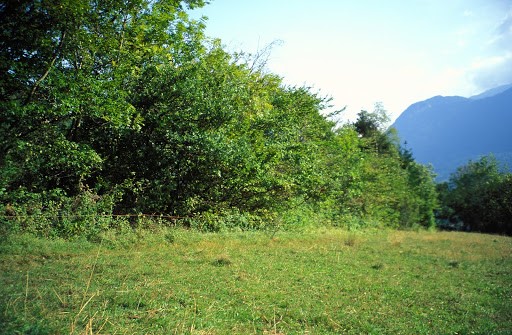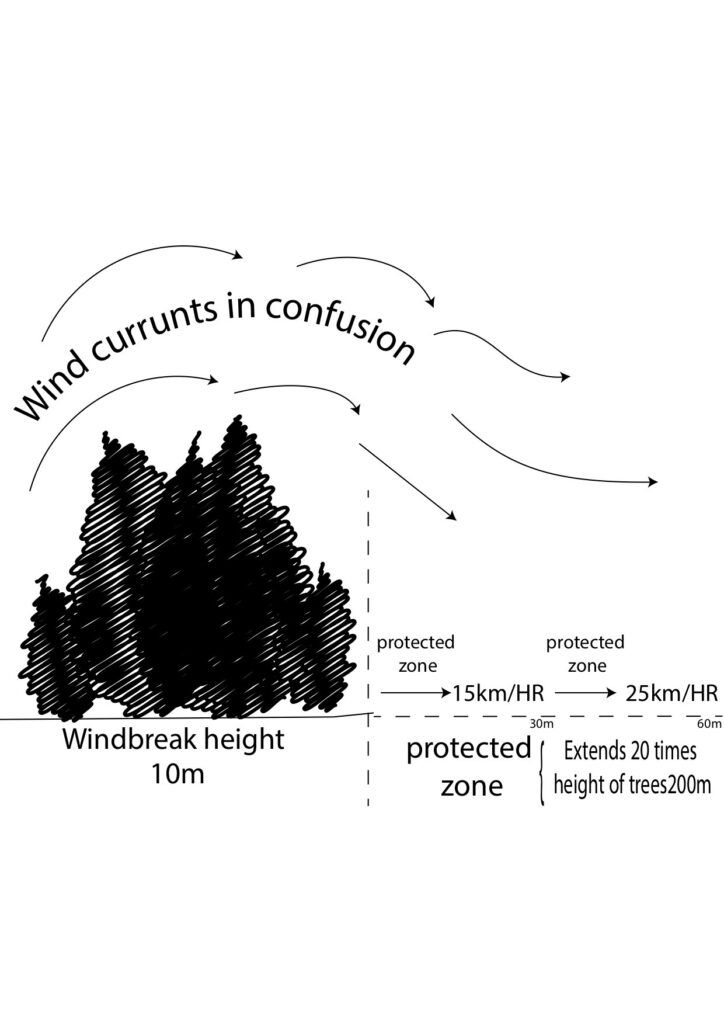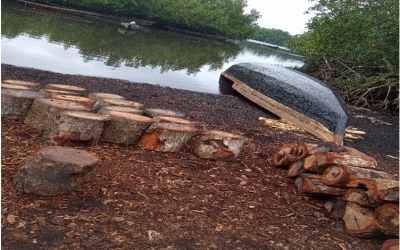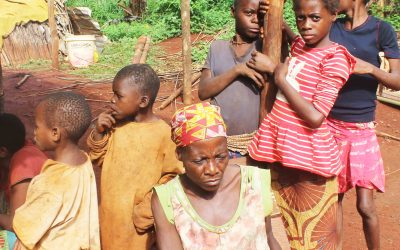In arid zones, the dry, hot climate conditions coupled with minimal water availability are often intensified by strong winds. Winds can dry out soils and damage crops, leading to stunted plants and reduced yields. Living conditions and agricultural production can be improved by planting trees and shrubs as windbreaks to reduce wind velocity and provide shade for crops. Windbreaks are barriers of trees or shrubs planted to slow the movement of wind at crop level and divert the force of the wind to higher altitudes. They frequently provide direct benefits to agricultural crops, resulting to higher yields. Windbreaks also provide shelter to livestock, grazing lands, and farms.
Reasons for Planting a Windbreak
Primary reasons for planting windbreaks around Forest Gardens include:
• To minimize damage to vegetables and crops
• To protect vegetables and fruit trees while they are flowering (because fruits and vegetables develop from the flowers, you can increase production by protecting the flowers from heavy winds)
• To minimize soil erosion
• To minimize the amount of moisture the wind evaporates from soils
Since our aim is to maximize the use of space to provide as many benefits as possible, we can combine protection with production by choosing tree and shrub species that, apart from furnishing the desired sheltering effect, yield food, fuel wood, fodder, green fertilizer, or other tree products.
Design considerations
The species composition of trees and shrubs used in windbreaks vary greatly around the world, but the basic design of windbreaks stays the same. There tends to be a time of the year, often during the dry season, when strong winds cause the most damage. It is those strongest winds which must be addressed first. To reduce wind velocity, windbreaks should be planted perpendicular to the strongest winds path. It may be necessary to plant windbreaks on multiple sides of field because wind often changes direction during the year.

Desirable characteristics of windbreak species
● Fast-growing
● Drought-resistant
● Ability to withstand strong winds
● Deep spreading root system to for stability
● Trees with small open crowns reducing wind speed without stopping it entirely
By creating a windbreak that is too dense, winds can actually create turbulence on the opposite side of windbreak, crashing into and causing damage to the field. For this reason, the windbreak should be somewhat permeable. Optimum permeability is about 50 percent, meaning the vegetation from the windbreak should fill about 50% of the space. It is also important to continuously ensure there are not any major gaps in the windbreak, as the wind will channel through those gaps, creating a destructive tunnel of high velocity winds. If gaps are formed, through tree die-off for example, replacement trees should be planted as soon as possible to fill them.
Windbreaks can protect for a distance of up to ten times the height of the tallest trees. So five-meter-tall trees protect fields for 50 meters, as long as the windbreak is uniform in height and spacing. To better understand the design of a windbreak, one must look at it from the side and top.
Although windbreaks of only one row of trees may suffice, experience shows that the most effective windbreaks are those consisting of multiple rows. From a side, cross- section view, windbreaks should have a right triangle shape, with a vertical slope on the side facing the wind. If you look at the drawing below, the tall trees on the windward side of the windbreak stand beside rows of shorter shrubs or bushes. For barriers planted specifically for wind protection, taller trees on the windward side row can be spaced two meters apart. The next row, usually smaller shrubs, should be spaced about two meters from the first row, then bushes and grasses planted beyond and in between the rows to provide protection at lower levels. The lines of trees and shrubs should be staggered. By integrating tall trees, shrubs, bushes, and grasses into the windbreak, you can protect from winds at all levels and you can also diversify the products that you can harvest from it.



